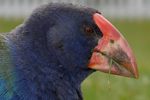Richard Crossley, Jerry Liguori, and Brian Sullivan have produced a unique and much needed bird book in The Crossley ID Guide: Raptors. The Crossley ID Guide: Raptors is a book you study at home so you can easily recognize North American raptors. The book has mystery-raptor quiz pages. It also has 101 stunning lifelike scenes developed through unique composite imagery. These images show the raptors as they actually appear in the field, under real-world conditions. In these images, the raptors are displayed in their various plumage from throughout their lifetime.
The Crossley ID Guide: Raptors makes each raptor fly off the page into your mind’s eye as you read and glance through the book. The descriptions for each raptor are written as personal, first-person accounts. This introduces the ornithological techno jargon (OTJ) in a manner that does not distract us as readers from the vivid details of each raptor. Raptor topography is well explained from the supercilium (eyebrow) to the terminal band (end of the tail), and all features and plumage in between.
“The setting is undeniably astounding…anyone who has been here would concur…I scan the horizon for my target species…” (p. 180) begins the description of the California Condor (Gymnogyps californianus). When I read this, I am engaged, like a novel, and I want to turn the page and learn more of the story. While the composite plates with up to 20+ raptors on each plate a novel and evolutionary birding teaching guide, the writing makes the raptors’ stories come alive.
The Crossley ID Guide: Raptors is the most complete guide to North American raptors. It covers all of North America’s diurnal raptor species except owls. While The Crossley ID Guide: Raptors helps us learn the raptors as we see them, its greatest value is that we can study the raptors from the comfort of our own homes.
How to order:
The Crossley ID Guide: Raptors
Paper Flexibound: The Crossley ID Guide: Raptors
Publisher: Princeton University Press
Author: Richard Crossley, Jerry Liguori, Brian Sullivan
ISBN: 9780691157405
Gabriel Thoumi, CFA, LEED AP, is a natural resource scientist and financial consultant.
Related articles
Proposed coal plant threatens Critically Endangered Philippine cockatoo

(04/02/2013) One kilometer off the Philippine island of Palawan lays the Rasa Island Wildlife Sanctuary; here forest grows unimpeded from a coral island surrounded by mangroves and coral reefs. Although tiny, over a hundred bird species have been recorded on the island along with a major population of large flying foxes, while in the waters below swim at least 130 species of coral fish, three types of marine turtles, and that curious-looking marine mammal, dugongs. Most importantly, perhaps, the island is home to the world’s largest population of Philippine cockatoos (Cacatua haematuropygia), currently listed as Critically Endangered. But, although uninhabited by people, Rasa Island may soon be altered irrevocably by human impacts.
For Easter: a baby horned screamer chick (photo)
(03/31/2013) A chick — typically a baby chicken — is a common symbol for Easter. Since we’re Mongabay, today we’re highlighting another type of chick: a young horned screamer from Eastern Colombia.
Humans killed over 10 percent of the world’s bird species when they colonized the Pacific Islands

(03/25/2013) Around 4,000 years ago intrepid Polynesian seafarers made their way into an untamed wilderness: the far-flung Pacific Islands. Over a thousands or so years, they rowed from one island to another, stepping on shores never yet seen by humans. While this vast colonization brought about a new era of human history, it also ended the existence of well-over a thousand bird species according to a new study in the Proceedings of the National Academy of Sciences (PNAS).